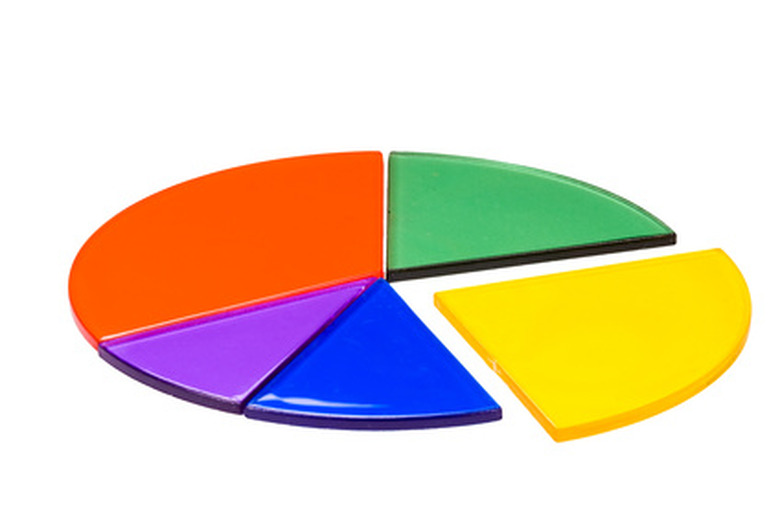How To Subtract Mixed Numbers With Regrouping
Mixed numbers consist of a whole number portion and a fraction portion. In the mixed number 4 1/8, 4 is the whole number and 1/8 is the fraction. When subtracting mixed numbers, you will sometimes be required to regroup. This is an easy process; if you just think about the meaning behind the steps it will all make sense.
Step 1
Look at the denominators in the fractions being subtracted. If the denominators are different, rewrite the fractions so they have like denominators. For example, in 4 1/8 and 3 1/4, the lowest common denominator of 8 and 4 is 8. The mixed number 4 1/8 would not change. The fractional part of 3 1/4 would change.
3 1/4= 3 + 1/4 x ?/?=?/8
Since 8 is the lowest common denominator, you'd ask what do you multiply 4 by to get 8? The answer is 2. Whatever you do to the denominator, you also do to the numerator. Because 1 x 2 = 2, the new mixed number is 3 2/8.
Now your problem looks like this 4 1/8 – 3 2/8=?
Step 2
Decide if you need to regroup. In this problem 1/8 – 2/8 is not possible because 1/8 is bigger than 2/8. You need to regroup.
4 1/8 = 3 + 8/8 + 1/8 = 3 9/8
To make the 1/8 larger, you are going to borrow 1 from the whole number 4. The 1 you are borrowing from 4 is the same as borrowing 8/8. The 4 becomes a 3 and you add the 8/8 to the 1/8 leaving you with 3 9/8.
Now your problem looks like this: 3 9/8 – 3 2/8 = ?
Step 3
Subtract the fractions.
9/8 – 2/8 = 7/8
Step 4
Subtract the whole numbers.
3 – 3 = 0
Step 5
Write the difference in simplest form.
7/8 is already in simplest form.
Cite This Article
MLA
Flynn, Janel. "How To Subtract Mixed Numbers With Regrouping" sciencing.com, https://www.sciencing.com/subtract-mixed-numbers-regrouping-4421157/. 24 April 2017.
APA
Flynn, Janel. (2017, April 24). How To Subtract Mixed Numbers With Regrouping. sciencing.com. Retrieved from https://www.sciencing.com/subtract-mixed-numbers-regrouping-4421157/
Chicago
Flynn, Janel. How To Subtract Mixed Numbers With Regrouping last modified March 24, 2022. https://www.sciencing.com/subtract-mixed-numbers-regrouping-4421157/
